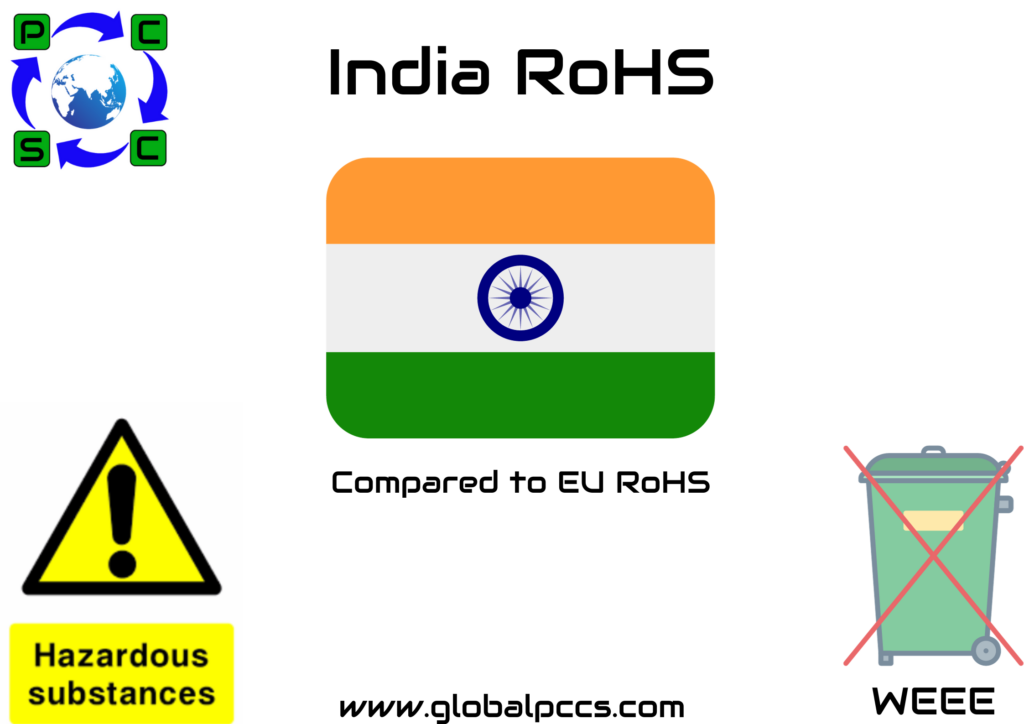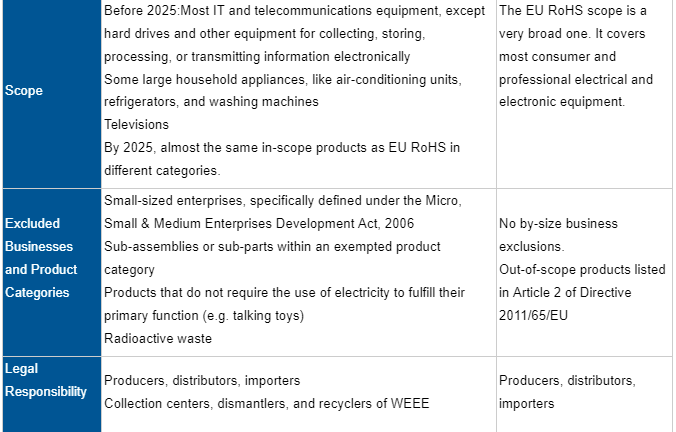 RoHS
RoHS
The RoHS is an acronym that stands for Restriction Of Hazardous Substances and every RoHS regulation aims at restricting the use of hazardous substances contained in electrical and electronic equipment, to better protect the environment and human health. As a result, the waste of electrical and electronic equipment (WEEE) becomes easier to recycle and less harmful.
Substances under RoHS are
They are heavy metals (lead, mercury, cadmium, chromium hexavalent) and, depending on the jurisdictions, some additives in plastics, like PBBs, PBDEs, and phthalates (BBP, DBP, DEHP, and DIBP).
India RoHS
In 2011, the largest democracy approved the “E-waste (Management and Handling) Rules.” India RoHS regulation addresses both the presence of hazardous substances (RoHS) in electronics as well as their waste (WEEE).
The Indian Environmental Management of Electronic Products
Electronic and electrical equipment (EEE) manufacturing, collection, storage, transit, import, and export are all governed by law. The goal is to ensure that electronic trash is recycled, treated, and disposed of in an environmentally friendly manner. Reducing the use of hazardous materials in the creation of EEE is covered in another chapter of the law.
Although both WEEE and RoHS are combined under one regulation, their enactment was not simultaneous. The WEEE section came into force first on May 1, 2012. The RoHS obligations started to apply on May 12, 2013. The transition period for achieving the restrictions set by the Rules ended two years following each date. Currently, the reduction of these hazardous substances in EEE is obligatory for all who fall within the scope.
Therefore, if you manufacture or import electronic products in the Republic of India, WEEE or RoHS obligations may apply, depending on the size of the Indian legal entity and the type of imported devices.
India RoHS Amendments
India’s Ministry of Environment, Forest, and Climate Change (MOEFCC) released in 2023 the “E-Waste (Management) Second Amendment Rules, 2023”.
By extending the product categories in the following ways, this amendment replicates the scope of EU RoHS:
- Information technology and telecommunication equipment
- Consumer electrical and electronics and photovoltaic panels
- Large and small electrical and electronic equipment
- Electrical and electronic tools (except large-scale stationary industrial tools)
- Toys, leisure, and sports equipment
- Medical devices (except all implanted and infected products)
- Laboratory instruments
Product categories do not match between EU and India RoHS. Nevertheless, both jurisdictions target almost the same products.
Moreover, if no compliant components or spare parts are available, they remain out of the India RoHS scope until April 1, 2028.
Comparison between India and EU RoHS
Same RoHS Principles
The following approaches apply to both markets:
- The projected in-scope products are almost the same between India RoHS and EU RoHS;
- Strategic equipment for military and national defense purposes is excluded from the scope;
- Packaging and batteries are regulated separately and not within the RoHS scope;
- The restriction thresholds apply at the homogeneous material level in both markets;
- These thresholds are 0.1% w/w for all restricted substances except for cadmium, which is at a level of 0.01% w/w;
- Exemptions apply to specific applications, such as lead contained in some metal alloys, glasses, or ceramics in specific electronic components.
Differences Between India and EU RoHS



India WEEE
The various stakeholders on the recycling of electronics must be registered and authorized by the Indian governmental authorities. Permit revisions and e-waste storage restrictions apply








 Authorised IMDS & CDX Training & Consulting partner for
Authorised IMDS & CDX Training & Consulting partner for





